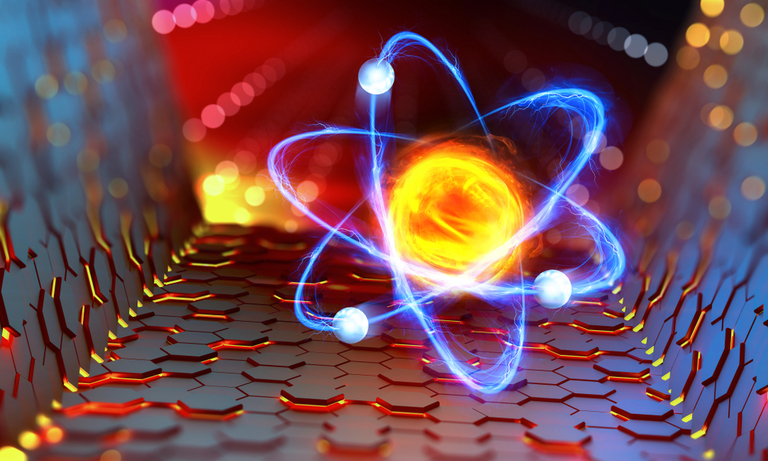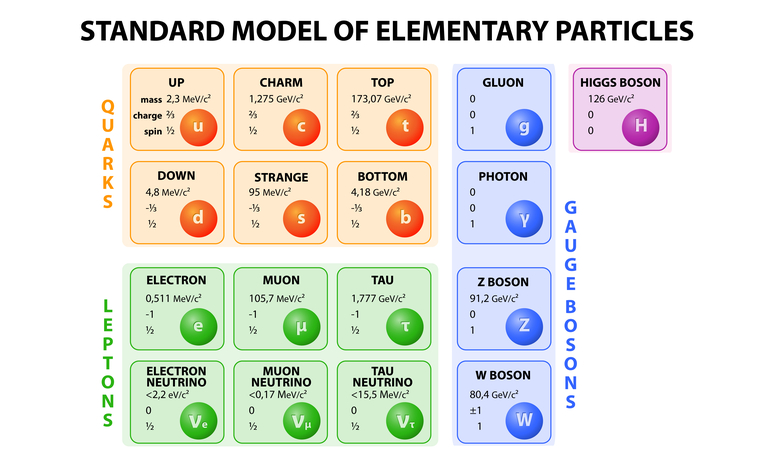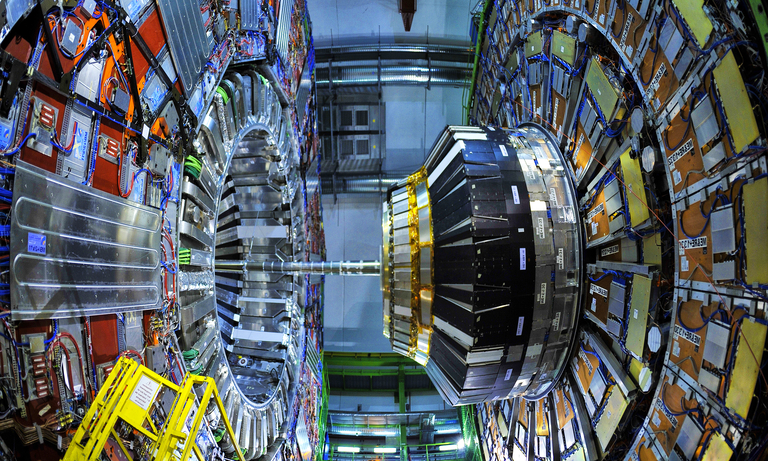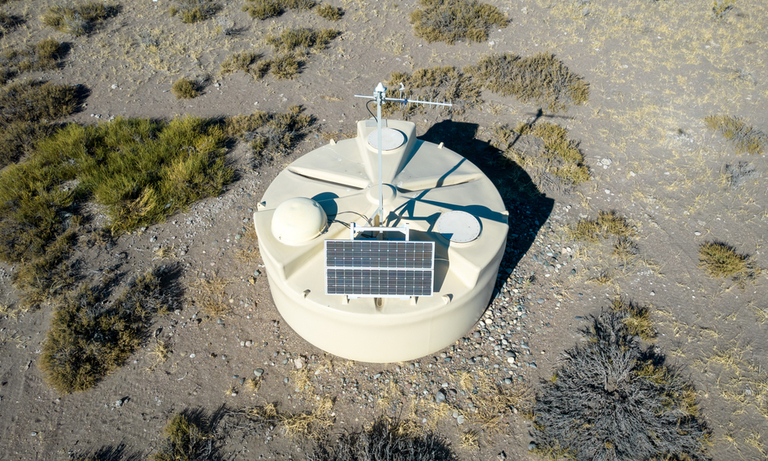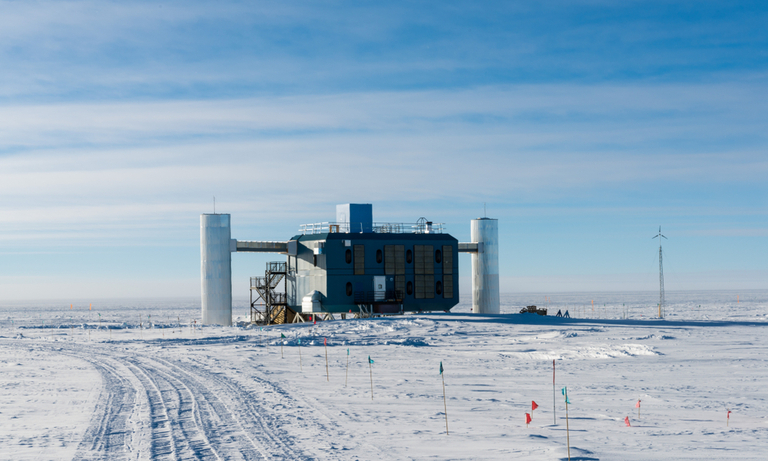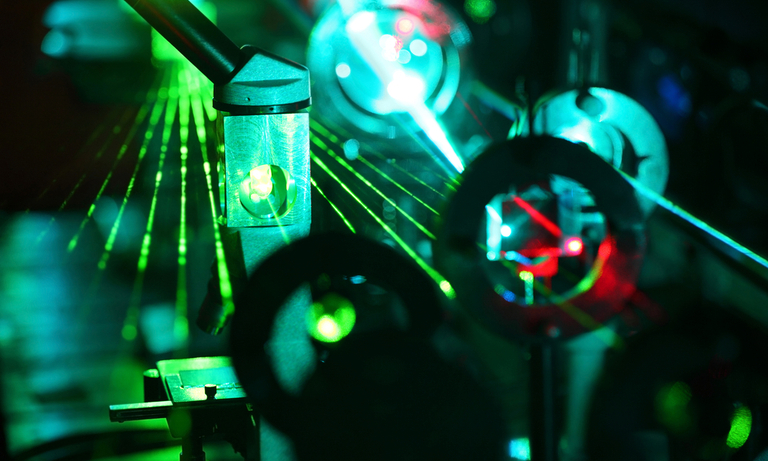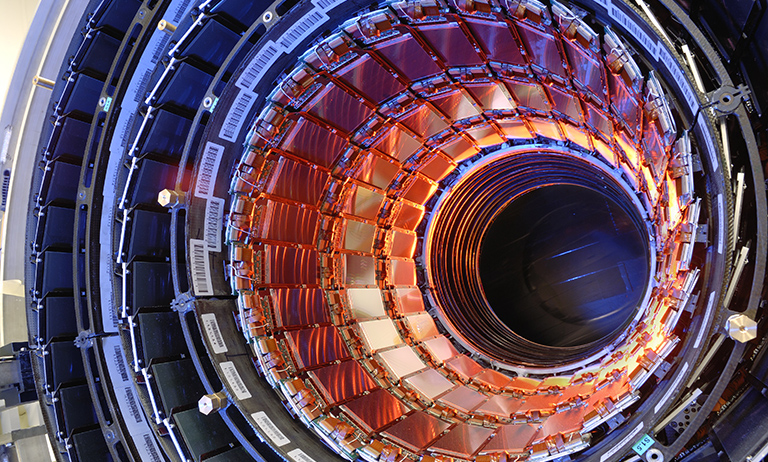Home
Products
Physics Research Field
Type of Experiment
Detector Type
Behind the Science
Tech in a Nutshell
United Kingdom (EN)
Select your region or country.

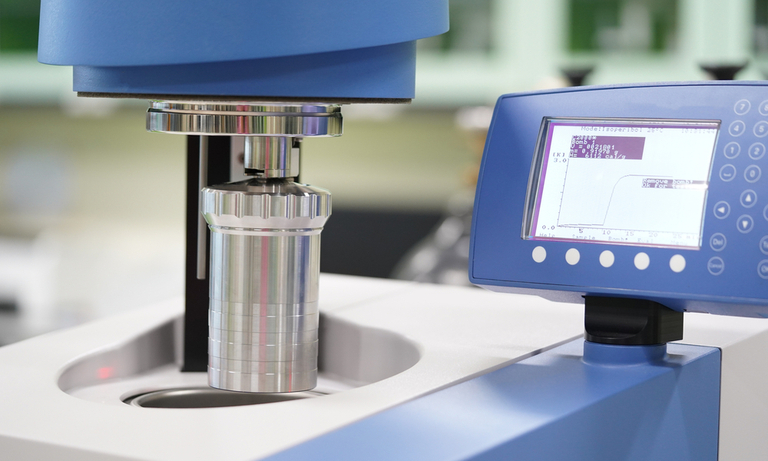
Calorimeter
A calorimeter is a particle detector designed to measure the energy lost by a particle. It operates by taking advantage of an effect first observed in cloud chambers in the 1930s: a single high-energy particle split into many particles in a cascade process now known as a particle shower.
The energy of this shower gives the estimation of the energy of the initial particle. The cascade process can be explained considering the special case in which the initial particle is an electron or a positron. Indeed recoiling from atoms of matter they produce photons that can produce electron-positron pairs if they have enough energy which starts the whole cycle again, doubling the total number of particles in each steps.
The energy of the photons in each step is lower than the previous one which brings an end of the pair production process. The same cannot be said of the shower, since the electrons and positrons can still have other types of interactions up to their complete absorption in the material.
This cascade process can be generalized: charged particles can create a neutral one and vice versa. Calorimeters are sensitive to any type of particle, making them widely used in particle physics. If the shower originates from electrons or positrons it is called an electromagnetic shower. However, if it originates from hadrons (proton, neutron, pion etc.) it is called hadronic shower. Accordingly there are two types, electromagnetic or hadronic calorimeters.
Either of these can be made as a sampling or homogeneous calorimeter. In the first case there is a succession of materials where the particle shower starts which is passive, where the deposited energy is measured using ordinary light sensors (photomultiplier tube, avalanche photodiode and silicon photomultiplier). A disadvantage of this kind of calorimeter is that some of the energy is deposited in the passive material and is not measured. For homogeneous calorimeters, one material combines both the properties of an absorber and a detector, meaning that its total volume is sensitive to the deposited energy.
Examples of experiments equipped with both electromagnetic and hadronic calorimeter are the two largest experiments at the Large hadron collider (LHC): the Compact Muon Solenoid (CMS) and ATLAS (A Toroidal LHC ApparatuS).
CMS and ATLAS has the goal to investigate a wide range of physics, including the search for the Higgs bosons extra dimensions, and particles that could explain the dark matter. The so called spontaneous symmetry breaking, which includes the Higgs boson, gives mass to elementary particles and explain the differences between the weak force and electromagnetism. In July 2012 both ATLAS and CMS reported the discovery of a particle consistent with the Higgs boson with a mass of 125 GeV. This new particle was detected by looking at its possible decay into two photons or four leptons. In 2013 Peter Higgs and François Englert, two of the theoretical physicists who predicted the existence of the Higgs boson, won the Nobel Prize in Physics.
The Compact Muon Solenoid (CMS) is built around the LHC's beam pipe 100 meters underground, within which the proton-proton collisions take place. In total the pipe is 21.6 meters long, 15 meters in diameter and weighs about 14000 tonnes. To record the signatures of particles produced when beams of protons are smashed together, it contains several layer of detectors designed to measure the energy and momentum of photons, electrons, muons, and other products.
The innermost is a silicon-based tracker, surrounded by an electromagnetic calorimeter, which is itself surrounded with a sampling hadronic calorimeter. The tracker and the calorimeters are located inside a solenoid which generates a powerful magnetic field, while outside the magnet there are the muon detectors and the outer calorimeter.
The Electromagnetic Calorimeter (ECAL) designed to measure the energies of electrons and photons is made up of a barrel section and two end-caps.
The barrel section consists of 61200 crystals of lead tungstate, an extremely dense and optically clear material. The end-caps seal off the barrel at either end, each containing 7324 further crystals. Hamamatsu S8148 avalanche photodiodes (APDs) and vacuum photodiodes (VPTs) are used as photodetectors in the barrel and end-caps calorimeter respectively.
The APDs have a photosensitive area of 5 mm by 5 mm and are made of opto-semiconductors to achieve optimal performance in a strong magnetic field. The Hadron Calorimeter (HCAL) consists of layers of brass or steel interleaved with plastic scintillators passed through by wavelength-shifting fibers and read out by hybrid photodiodes.
ATLAS, like CMS, sits in a cavern 100 meters underground. It is a cylindrical long 46 meters, with a diameter of 25 meters, and weighing around 7,000 tonnes.
The detector is made up of six different subsystems designed to detect some of the most energetic particles ever created on earth. They are wrapped concentrically in layers around the collision point to measure the trajectory, momentum, and energy of the particles. The four major components are the inner detector, calorimeter, muon spectrometer and the magnet system.
There two sampling calorimeters: one electromagnetic and the other hadronic. For the electromagnetic calorimeter the energy-absorbing materials are lead and stainless steel, with liquid argon as active material kept at low temperature by a cryostat. The hadronic calorimeter is realized with a variety of different sub-parts employing several techniques.
The central region is called the Tile Calorimeter and it is made up of alternating layers of iron used as an absorber and scintillating tiles as active material to measure the energy deposited. The Tile Calorimeter measures the energy and direction of the quarks and gluons produced in the proton-proton collisions, which appear as jets of charged and neutral particles.
It consists of a fine-grained steel matrix with 430 000 “tiles” of plastic scintillator. Optical fibers read the light signal and carry it to 10 000 Hamamatsu R7877 photomultiplier tubes. The Endcap region is covered by the Liquid Argon Hadronic EndCap made of lead and liquid Argon like the electromagnetic calorimeter.
- Confirmation
-
It looks like you're in the . If this is not your location, please select the correct region or country below.
You're headed to Hamamatsu Photonics website for GB (English). If you want to view an other country's site, the optimized information will be provided by selecting options below.
In order to use this website comfortably, we use cookies. For cookie details please see our cookie policy.
- Cookie Policy
-
This website or its third-party tools use cookies, which are necessary to its functioning and required to achieve the purposes illustrated in this cookie policy. By closing the cookie warning banner, scrolling the page, clicking a link or continuing to browse otherwise, you agree to the use of cookies.
Hamamatsu uses cookies in order to enhance your experience on our website and ensure that our website functions.
You can visit this page at any time to learn more about cookies, get the most up to date information on how we use cookies and manage your cookie settings. We will not use cookies for any purpose other than the ones stated, but please note that we reserve the right to update our cookies.
1. What are cookies?
For modern websites to work according to visitor’s expectations, they need to collect certain basic information about visitors. To do this, a site will create small text files which are placed on visitor’s devices (computer or mobile) - these files are known as cookies when you access a website. Cookies are used in order to make websites function and work efficiently. Cookies are uniquely assigned to each visitor and can only be read by a web server in the domain that issued the cookie to the visitor. Cookies cannot be used to run programs or deliver viruses to a visitor’s device.
Cookies do various jobs which make the visitor’s experience of the internet much smoother and more interactive. For instance, cookies are used to remember the visitor’s preferences on sites they visit often, to remember language preference and to help navigate between pages more efficiently. Much, though not all, of the data collected is anonymous, though some of it is designed to detect browsing patterns and approximate geographical location to improve the visitor experience.
Certain type of cookies may require the data subject’s consent before storing them on the computer.
2. What are the different types of cookies?
This website uses two types of cookies:
- First party cookies. For our website, the first party cookies are controlled and maintained by Hamamatsu. No other parties have access to these cookies.
- Third party cookies. These cookies are implemented by organizations outside Hamamatsu. We do not have access to the data in these cookies, but we use these cookies to improve the overall website experience.
3. How do we use cookies?
This website uses cookies for following purposes:
- Certain cookies are necessary for our website to function. These are strictly necessary cookies and are required to enable website access, support navigation or provide relevant content. These cookies direct you to the correct region or country, and support security and ecommerce. Strictly necessary cookies also enforce your privacy preferences. Without these strictly necessary cookies, much of our website will not function.
- Analytics cookies are used to track website usage. This data enables us to improve our website usability, performance and website administration. In our analytics cookies, we do not store any personal identifying information.
- Functionality cookies. These are used to recognize you when you return to our website. This enables us to personalize our content for you, greet you by name and remember your preferences (for example, your choice of language or region).
- These cookies record your visit to our website, the pages you have visited and the links you have followed. We will use this information to make our website and the advertising displayed on it more relevant to your interests. We may also share this information with third parties for this purpose.
Cookies help us help you. Through the use of cookies, we learn what is important to our visitors and we develop and enhance website content and functionality to support your experience. Much of our website can be accessed if cookies are disabled, however certain website functions may not work. And, we believe your current and future visits will be enhanced if cookies are enabled.
4. Which cookies do we use?
There are two ways to manage cookie preferences.
- You can set your cookie preferences on your device or in your browser.
- You can set your cookie preferences at the website level.
If you don’t want to receive cookies, you can modify your browser so that it notifies you when cookies are sent to it or you can refuse cookies altogether. You can also delete cookies that have already been set.
If you wish to restrict or block web browser cookies which are set on your device then you can do this through your browser settings; the Help function within your browser should tell you how. Alternatively, you may wish to visit www.aboutcookies.org, which contains comprehensive information on how to do this on a wide variety of desktop browsers.
5. What are Internet tags and how do we use them with cookies?
Occasionally, we may use internet tags (also known as action tags, single-pixel GIFs, clear GIFs, invisible GIFs and 1-by-1 GIFs) at this site and may deploy these tags/cookies through a third-party advertising partner or a web analytical service partner which may be located and store the respective information (including your IP-address) in a foreign country. These tags/cookies are placed on both online advertisements that bring users to this site and on different pages of this site. We use this technology to measure the visitors' responses to our sites and the effectiveness of our advertising campaigns (including how many times a page is opened and which information is consulted) as well as to evaluate your use of this website. The third-party partner or the web analytical service partner may be able to collect data about visitors to our and other sites because of these internet tags/cookies, may compose reports regarding the website’s activity for us and may provide further services which are related to the use of the website and the internet. They may provide such information to other parties if there is a legal requirement that they do so, or if they hire the other parties to process information on their behalf.
If you would like more information about web tags and cookies associated with on-line advertising or to opt-out of third-party collection of this information, please visit the Network Advertising Initiative website http://www.networkadvertising.org.
6. Analytics and Advertisement Cookies
We use third-party cookies (such as Google Analytics) to track visitors on our website, to get reports about how visitors use the website and to inform, optimize and serve ads based on someone's past visits to our website.
You may opt-out of Google Analytics cookies by the websites provided by Google:
https://tools.google.com/dlpage/gaoptout?hl=en
As provided in this Privacy Policy (Article 5), you can learn more about opt-out cookies by the website provided by Network Advertising Initiative:
http://www.networkadvertising.org
We inform you that in such case you will not be able to wholly use all functions of our website.
Close



